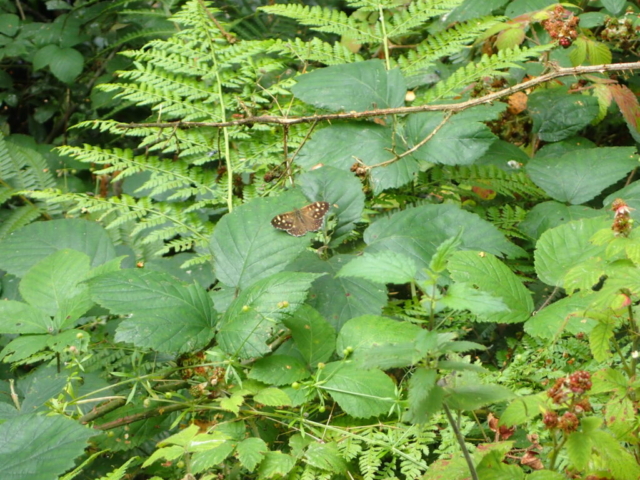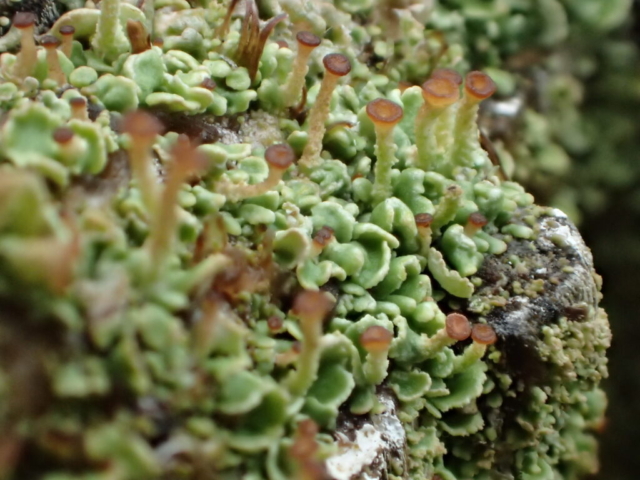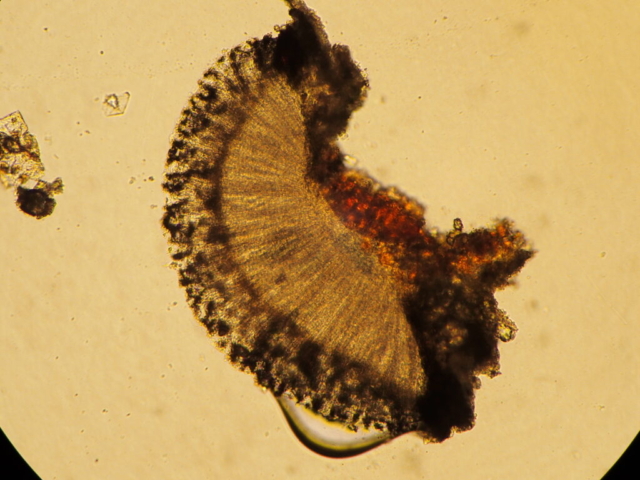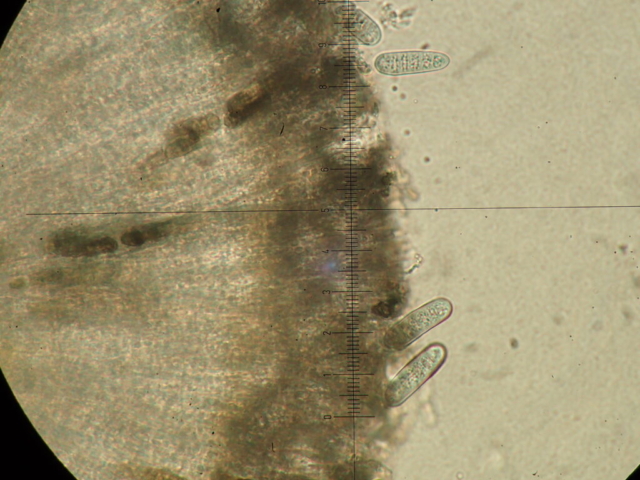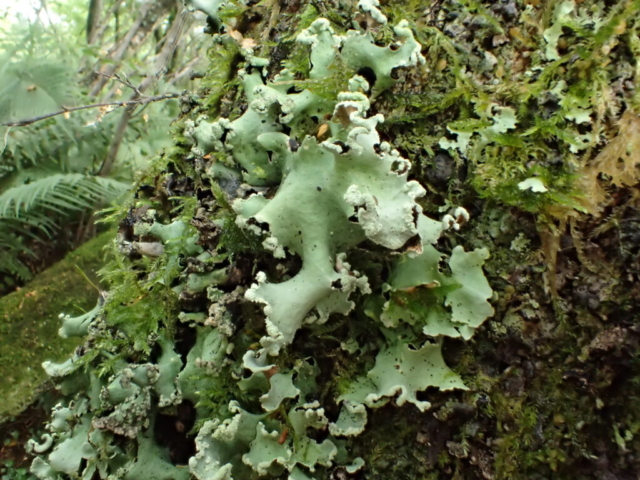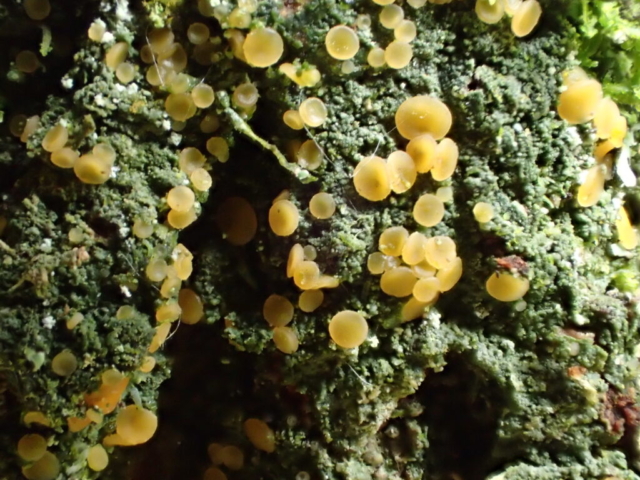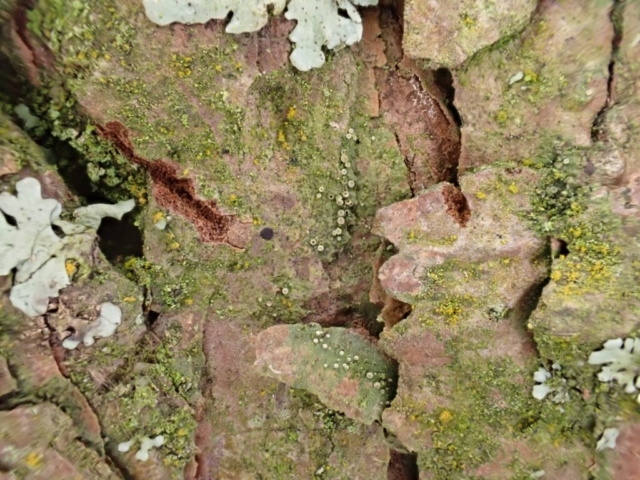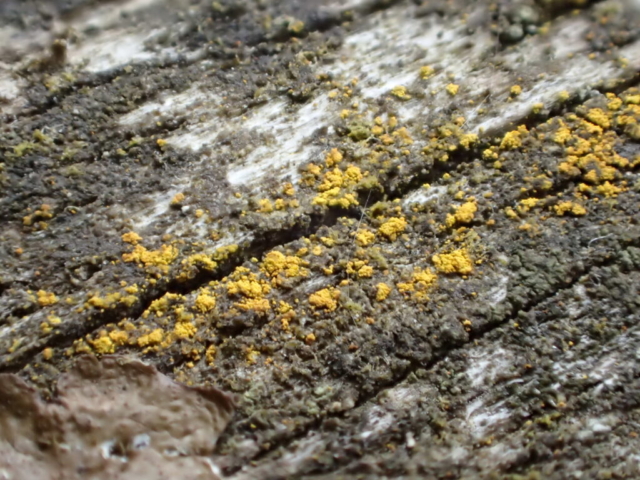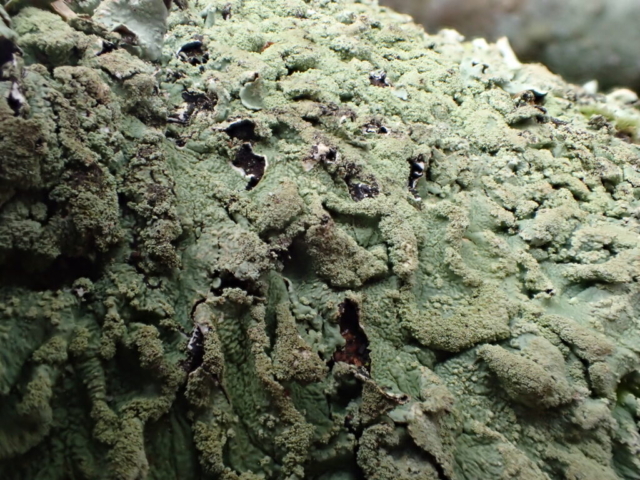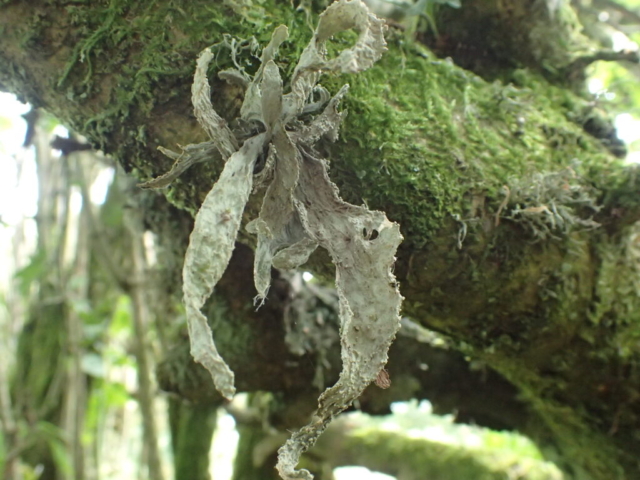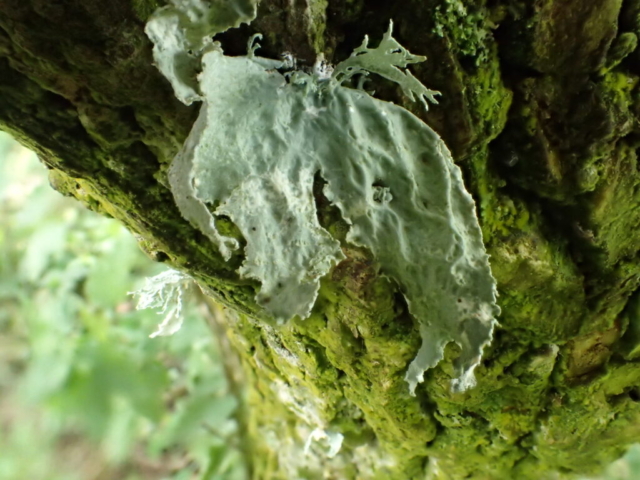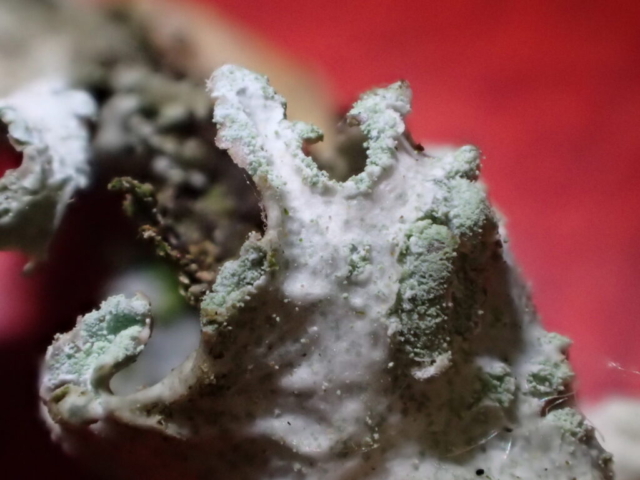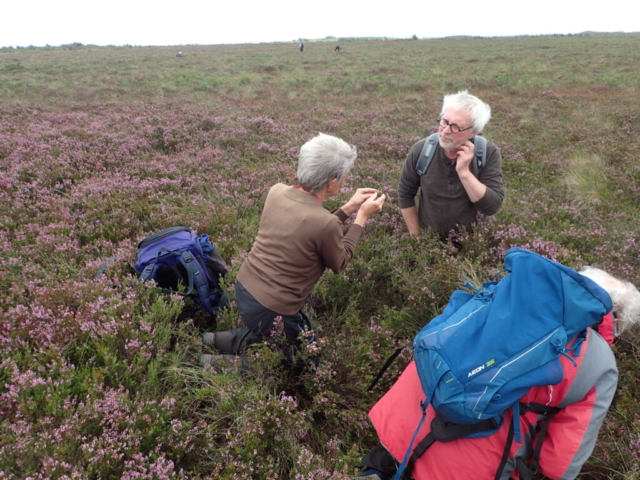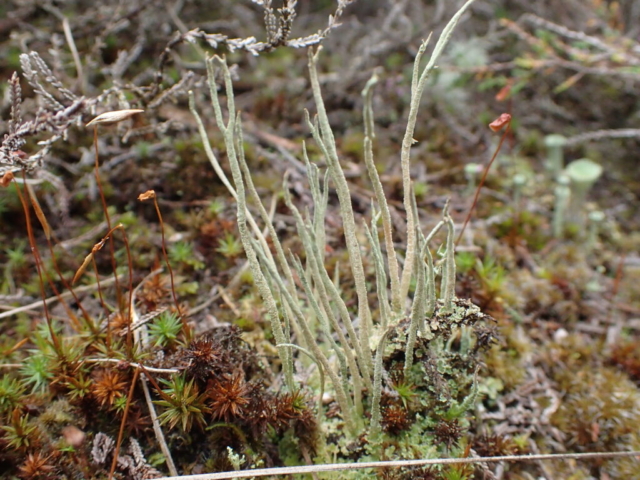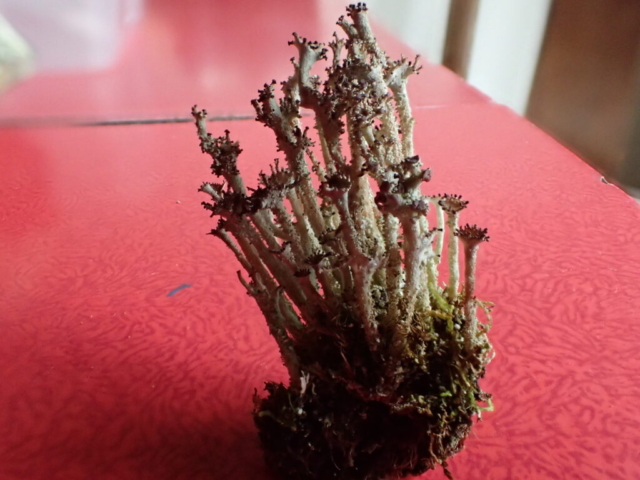The weather forecast did not bode well for our trip to the Solway coast with a storm bringing heavy rain overnight prior to our visit. The weather at the coast usually clears quickly and this proved to be the case with no rain all day though it was blustery and occasionally sunny enough for some butterflies.
In the morning we visited the CWT Bowness-on-Solway reserve, a small area of old gravel pits, given to Cumbria Wildlife Trust in 1977, which has turned into luscious ponds with lots of new woodland and open glades with interesting invertebrates, botany and many tasty ripe blackberries. Mossy willows dominate in the wetter areas with hawthorn, birch and the occasional oak and elder on drier ground. Despite its small size this felt like very good habitat, one that, had it been on the west coast of Scotland, might have been home to Lobarion lichens. Little Xanthoria parietina was seen which is a good sign. However we saw a limited range of species (though they were looking lush) probably because it was dark under the willow canopy and many trees had fairly acidic bark, as well as not being very old. Succession to full-blown woodland is stopped by regular scrub removal so as to preserve the freshwater habitat, the main feature of this site, as well as glades for flowering plants and butterflies.
The trees had foliose species including prolific Parmotrema perlatum, pearly grey with sorediate crinkly edges, Punctelia subrudecta with punctiform dots of soredia on the lobe surface and around the margins, and Flavoparmelia caperata, all looking very green after the rain. Mossy willow trunks had Peltigera membranacea and P. hymenina. Examining trees more closely we found a good amount of Normandina pulchella amongst bryophytes and on drier bark clear of moss Phaeographis smithii, confirmed later when Chris looked at the exciple and spores. Other lirellate species (Opegrapha and Arthonia in old money) were on smooth birch bark. The orange discs of Coenogonium (Dimerella) luteum showed up well amongst moss; on drier trunks in cracks the smaller pale grey-pink discs of Coenogonium pineti were seen. There was lots of common Ramalina fastigiata and R. farinacea as well as a small example of Ramalina fraxinea on a well-lit hawthorn near the edge of the reserve; this latter species was impacted by sulphur dioxide pollution but is now hopefully recovering – a species for which we have International Responsibility. Alongside this was what we thought might be poorly formed R. fraxinea but on closer inspection has proved to be Ramalina canariensis which has distinctive soralia around the edge of short broad lobes. This is coastal in the north, liking well-lit situations on basic bark (this was on elder). Nearby was Physcia stellaris on alder, with a K- medulla, which distinguishes it from P. aipolia which has a K+ yellow medulla.
At the reserve entrance there was a nice sandstone gate stoop with the only saxicolous species we saw at this site: Ochrolechia parella, Lecidella stigmatea and Lepra (Pertusaria) amara (soredia with bitter taste) which is usually on bark but can be on humid sheltered rock. On the lignum of gates, fence posts and dead tree trunks we found Cladonia species, Candelariella reflexa, Fuscidea lightfootii and Violella fucata (Pd+ orangy red) amongst others.
Moving on to RSPB Campfield we made our way past the main bird hides and through some damp woods where Arthonia spadicea was on birch, as well as typical acid bark species. A boardwalk then led onto Bowness Common, described in the SSSI citation as the largest raised mire remaining in England. Initially it looked bleak for lichens – a sea of heather, bog myrtle and sphagnum, mostly pretty damp with not much exposed peat – but off the boardwalk it was wet but firm underfoot with lots of lovely Cladonia hiding in open patches of peat between the heather. Mounds of C. portentosa were the most visible. A lovely dark brown “heathtail” with a ring of spines at the hollow tip forming a star-like effect is possibly Cladonia crispata var cetrariiformis to be confirmed. There were a further dozen or so Cladonia species including C. verticillata with tiers of podetia and Cladonia subulata, some red-fruited ones and others awaiting identification. Lots of bog myrtle provided a bark habitat for corticolous crusts, including Mycoglaena myricae, a non-lichenised fungus with dark perithecia and a pale ring of thallus around each one, found wherever the host grows, and various Lecanora species. Where there was lignum (a finger post and fence rails) the lichen was dripping off. Here we found Xanthoria ucrainica, Usnea subfloridana, Pyrrhospora quernea and Placynthiella icmalea.
Chris tested a reindeer lichen and concluded it was Cladonia ciliata var ciliata (the grey-brown version lacking usnic acid) – browner towards the down-pointing tips than other similar Cladonia and predominantly dichotomous at the apices. It had an orangey/red Pd reaction and was KC-, distinguishing it from C. portentosa (KC+y, Pd-) and C. arbuscula (KC+y, Pd+rust-red). This test might have helped: “The bright UV fluorescence at the base of C. portentosa is especially useful for rapid separation from C. arbuscula.”
Further on Peter Bisset confirmed Flavoparmelia soredians on the hand rail of a bridge with K+ yellow going red.
The two different habitats very close to each other made for an interesting day’s licheneering. Thanks to Russell Gomm for suggesting the visit and the Cumbria Wildlife Trust and RSPB for permission to visit their reserves and take specimens. And thanks to Roger for sharing his botany knowledge.
Text: Chris Cant and Caz Walker. Photos: Chris Cant, Peter Bisset, Caz Walker


